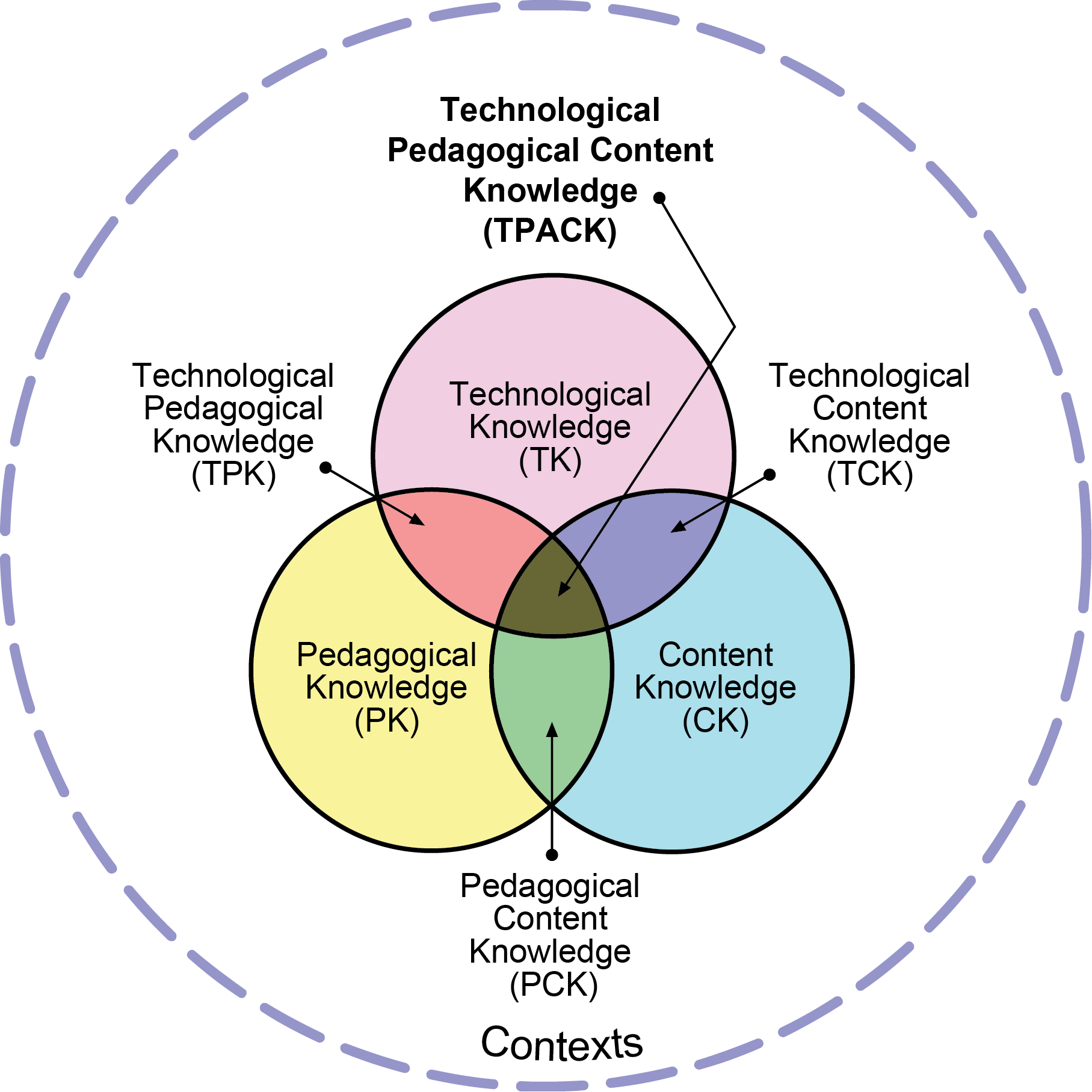by Jeffrey M. Welch
If you have been in the classroom for a while, you are well familiar with Bloom’s taxonomy. If you are knee-deep in Common Core, you know all about Webb’s Depth of Knowledge (DOK) which, simplistically described, is an update to Bloom’s. In the technology sphere, there is a similar model that has a practical connection to the Bloom’s and DOK, but has been built around levels of technology integration in the classroom. This is called the SAMR Model and it has become very influential in the educational technology universe. There is a second model that has also become widespread, it is called TPACK which is really more about the teachers preparation and the interaction of their skills than it is about the particular lesson. These two models will be the focus of this post. If you spend any time in Edtech circles, or go to any training on technology integration, you will encounter these two acronyms sooner or later.
 |
|
Image Credit: https://twitter.com/sylviaduckworth
|
Background on SAMR
SAMR was created by Ruben R. Puentedura to describe the levels of tech integration in a classroom. As you move higher in the model, you get closer to the kind of learning that excites teachers and students alike. The fundamental goal is not to recreate a paper model of learning using a computer, it is to be able, at least sometimes, to do things that you could not do before you had technology. You might describe this as reimagining rather than recreating existing teaching methods.
A great many teachers introduce technology into their classroom and barely change the way the teach. The device is the new notebook/textbook/pencil. It can be so much more. Technology integration can transform learning and make student into creators and teachers. If SAMR is new to you, look through the descriptions and information below and reflect on where your technology activities fit in the SAMR hierarchy. Not everything has to hit the highest and most complex level, but it should always be a goal to be pushing toward that high level with some of the activities that we accomplish in a classroom.
SAMR Explained by Students
Levels of SAMR
SAMR has four levels, these are generally placed in two groups. The bottom two, substitution and augmentation are grouped as “enhancement” strategies and are within the ability of almost any teacher. The next two levels, modification and redefinition are a step up and will take effort and creativity, first from the teacher and later from the student. These two levels are grouped as “transformation.”
Transformation
|
Redefinition
|
Definition: An assignment that has been redefined is something that could not be done before technology was brought into the classroom. These assignments give students an audience or stage to demonstrate their learning
Examples: Creation of a blog, documentary video, interview, or performance that can be shared through the Internet and allow for broad interaction inside and outside of the classroom walls. Interaction with other classroom separated by distance, or the use of video conferencing with experts.
|
Modification
|
Definition: Once you move into the modification range, the technology brought into the assignment allows for a significant modification and improvement in the design of the assignment.
Examples: The ability of two or more students to collaborate on a document in real time. Incorporation of multimedia into an assignment: video, audio, interactive animations, and some games. The addition of student nar
| |
Enhancement
|
Augmentation
|
Definition: Augmentation lessons are very similar to substitution, except that the addition of the device has allowed the lesson to be improved.
Examples: Use of tools that enhance a process like spell-checking, grammar checkers, thesaurus, etc. Embedded links to resources in assignments. A self-grading assessment which gives instant feedback.
|
Substitution
|
Definition: As the word implies, substitution is taking one thing and placing an equivalent in its place. When technology is brought into any classroom environment, substitution is the first strategy utilized.
Examples: Reading using a device instead of a book, taking notes or writing in Google Docs in place of a notebook, or completing a fill in worksheet on a computer.
|
SAMR Resources
See the blog post: SAMR and Bloom's Taxonomy: Assembling the Puzzle by Ruben Puentedura, and a video introduction to the SAMR model. The three different presentations by Dr. Puentedura below are an excellent places to learn more about SAMR. If this is new to you, stick with the first one, if you are looking to sharpen your knowledge move on to two and three.
- SAMR: Beyond the Basics, a presentation by Ruben R. Puentedura, Ph.D.
- SAMR In the Classroom: Developing Sustainable Practice, a presentation by Ruben R. Puentedura, Ph.D.
- SAMR, Learning, and Assessment, a presentation by Ruben R. Puentedura, Ph.D.
To find more information from Dr. Puentedura check out his blog. You can find additional helpful information on SAMR prepared by Kathy Schrock.
 |
Reproduced by permission of the publisher, © 2012 by tpack.org
|
TPACK
TPACK is a way of describing the interaction between three elements: Technological Knowledge, Pedagogical Knowledge, and Content Knowledge. Each successful teacher requires a deep understanding of all three elements. What TPACK brings to the picture is a method for explaining the interactions between these elements, and possibly helping the individual teacher reflect on missing competencies in order to point them toward areas of needed professional growth. For an indepth explanation of these areas see TPACK Explained. To learn about making TPACK part of your activity planning, see this set of resources on activity types for different grade levels and subject areas.
Comments
Post a Comment